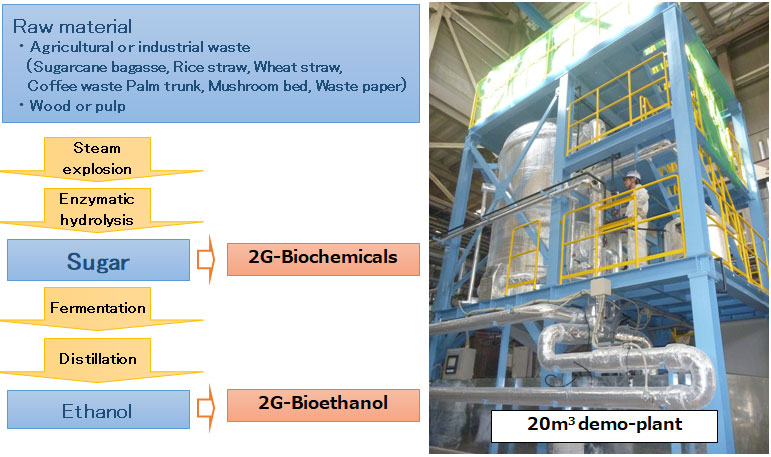2nd Generation Bioethanol Production Process
This is a "2G (second generation)-bioethanol" process using inedible resources as raw materials. This process does not compete for food resources and leads to reduced CO2 emissions. "2G-sugar" which is an intermediate in this process, can be used as a material for bio-based chemicals.
2nd Generation Bioethanol Production Process

Features
- Inedible resources can be used as raw material.
- Enzymatic hydrolysis can be carried out under the high viscosity condition.
- Unique hydrolysis process allows for enzyme usage reduction.
Applications
- Raw materials
- Agricultural or industrial waste (Sugarcane bagasse, Rice straw, Wheat straw, Coffee waste, Palm trunk, Mushroom bed, Waste paper)
- Wood or pulp
- Products
- 2G-Ethanol
- 2G-Sugar (for bio-based chemicals)
Development Status
- Demonstrated at 20 m3-scale
- Viable projects for commercial use for domestic and overseas clients are being investigated